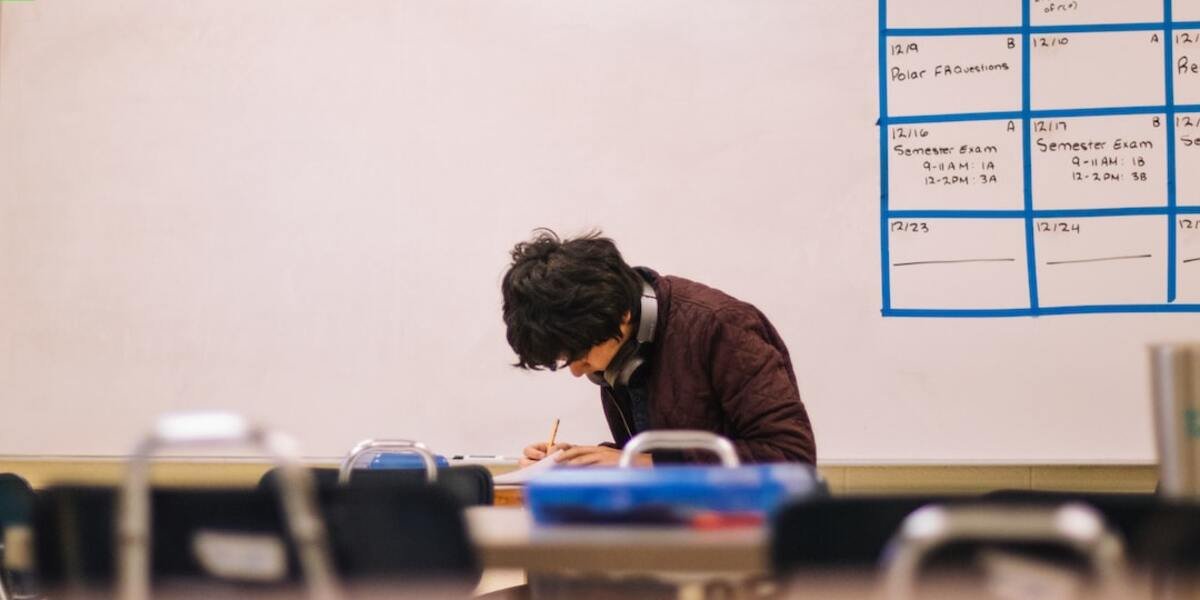3rd Grade ELA: Understanding the Core Elements and Strategies for Success
Understanding the core elements and strategies for success in 3rd grade ELA (English Language Arts) is key to helping your child or students excel. This level of instruction marks a significant shift from learning strictly how to read, to using reading as a tool for acquiring new knowledge. The comprehension abilities fostered during this stage lay the foundational building blocks for future education.
This blog post will delve into what entails 3rd grade ELA: its main components, teaching techniques educators employ, and effective strategies parents can use at home. Fully grasping these aspects ensures children not only perform well academically but also develop a love for reading that extends far beyond school years.
Did you know?
In 3rd grade ELA (English Language Arts), children often exhibit a significant jump in their reading comprehension ability, moving from learning to read simple phrases, to reading-to-learn entire concepts and ideas.
Understanding the Core Curriculum of 3rd Grade ELA
The educational journey of every child is unique and pivotal, particularly during the elementary years. It’s here that students are introduced to English Language Arts (ELA), a subject critical for enhancing literacy skills. In third grade, ELA plays an even more significant role as children start delving deeper into reading comprehension, writing proficiency and vocabulary expansion.
Technology integration in education has made it easier for educators to teach 3rd Grade ELA while keeping learners engaged. Innovative digital platforms offer interactive lessons on parts of speech or spelling rules which can be processed at individual learning speeds. These tools also allow teachers to monitor student progress effectively with analytical reports.
Understanding the core curriculum requires recognizing its objectives – shaping young minds not only in their knowledge but also their cognitive capacity to think critically about written content and express themselves articulately both verbally and on paper.
These technological advancements have considerably revolutionized how ‘Elementary School Learning’ is perceived; making early education creative yet systematic; fun-filled yet focused towards specific targets framed by central educational boards.
In essence, technology serves as bridges connecting dots within the vast realm of 3rd Grade ELA nurturing lifelong readers who understand text beyond just words stringed together but appreciate literature from different genres fostering creativity whilst boosting foundational language acquisition skills requisite for future academic success.
Exploring Key Reading Comprehension and Analysis Skills
The integration of technology in the education system has significantly transformed how 3rd grade ELA (English Language Arts) is taught. As we dive deeper into 2023, there’s an increasing emphasis on honing essential reading comprehension and analysis skills among elementary learners.
Reading comprehension holds a vital position at the core curriculum of third-grade ELA. Its significance isn’t just about understanding what’s read — it marks progression towards critical thinking, inference creation, logic establishment, and evidence-based argument formation; all cornerstones for higher-level cognitive abilities.
With technological advancements such as interactive eBooks and digital literacy applications becoming widespread in classrooms around the world today. They act as stepping stones to mold students’ foundational knowledge while keeping them engaged and stimulated throughout their learning process.
In conclusion, integrating technology into teaching curriculums contributes massively towards ensuring viable educational outcomes especially when balanced appropriately with more conventional approaches This perfect blend leads not only strengthens literal understanding but also encourages analytical reasoning fostering well-rounded intelligent young minds ready face challenges ahead.
Identifying Essential Writing and Grammar Objectives
Effective literacy skills play a significant part in 3rd grade ELA (English Language Arts). But, beyond reading comprehension and decoding words, there’s an equally critical area to focus on: the writing and grammar objectives. Here we discuss some of those crucial goals that your child should aim for.
First up is mastering sentence structure. In third grade, students dive deeper into complex sentences. They learn about subjects and predicates – two essential components that form a complete thought or idea in written English.
Next would be understanding parts of speech better. Properly identifying nouns, verbs, adjectives – these are fundamental elements to improve word usage skills within context-specific frames significantly.
Students must also hone their paragraph building techniques during this phase. Paragraphs allow ideas to flow logically which aids readers’ cognition process making it an important skill set required not just acadically but practically as well aiding clear communication throughout life.
Punctuation marks use correctly can help enhance clarity in children’s writings considerably too avoiding confusion from misinterpretations due either improper placement or omission altogether often causing problems even among skilled writers at times if overlooked!
Enhancing Vocabulary and Spelling Proficiency in Third Graders
Enhancing vocabulary and spelling proficiency in third graders is an essential part of their English Language Arts (ELA) curriculum. As we navigate through the 21st-century education landscape, it’s crucial that we integrate technology into classroom instructions to accelerate learning outcomes effectively for this age group.
With the advent of several educational technologies, teaching ELA in third grade has taken a leap forward beyond traditional techniques. The application of these high-tech tools not only enhances children’s language arts capabilities but also fosters interest and engagement among them. Educational apps provide interactive platforms where children can learn new words with their definitions and contextual use while having fun!
This unique blend leads to a highly effective way of developing vocabulary skills at an early stage.
Integrating digital resources like online games specifically designed for language attunement helps kids improve spelling accuracy significantly since they often combine auditory guidance with visual cues which optimize recall abilities. These initiatives are revolutionizing elementary school learning by creating more captivating environments optimized towards improving literacy strengths amongst youngsters – something very pertinent to the ever-evolving needs brought about by contemporary times.
Implementing Effective Vocabulary Building Strategies
Building a strong vocabulary is crucial for third graders as they delve deeper into their educational journey. Integrating technology with the elementary school learning process can significantly enhance this aspect of 3rd grade ELA (English Language Arts), particularly in strengthening spelling proficiency and expanding word knowledge.
One effective strategy worth exploring is the use of language-focused education applications or software. These digital platforms offer interactive games which focus on synonyms, antonyms, homophones, and other critical building blocks required to forge a robust set of words. Not only do children find these engaging; actively ‘playing’ helps them learn new words while strengthening their comprehension skills simultaneously.
Online storytelling and reading platforms are another excellent resource that weave vocabulary acquisition seamlessly into narratives suitable for this age group. By combining advanced visual aids with textual content, students’ inherent curiosity gets piqued leading to improved literacy levels whilst broadening their lexicon organically.
Augmented Reality (AR) also presents an inventive method to embed vocabulary learning within real-world environments through exploration and interaction techniques – thus making it more applicable beyond classroom settings!
Flashcard apps have gained traction as well due to its simplicity yet effectiveness in teaching spelling rules alongside meanings allowing customization according to each learner’s aptitude level – creating personalized study paths targeted towards success!
Mastering Age-Appropriate Spelling Patterns
Enhancing a child’s vocabulary and spelling competence at the 3rd grade level is essential for their ongoing language development. By mastering age-appropriate spelling patterns, students not only improve in English Language Arts (ELA), but also develop an overall stronger foundation in communication skills which will aid them throughout life.
To assist your third-graders with this critical skill, let’s explore some effective techniques educators and parents can employ that center around technology integration into elementary school learning.
1. Spelling Apps: Nowadays, there are numerous educational apps specifically designed to help children learn how to spell effectively and correctly. These interactive applications use games, quizzes, puzzles etc., making education entertaining yet beneficial aiding mastery of 3rd grade ela concepts.
2. Online Flashcards: Using online flashcard platforms where you add words from their curriculum gives learners repeated exposure to difficult-to-spell words helping reinforce memorization while offering flexibility as they can access these anytime anywhere.
3. Interactive eBooks: Ebooks often come equipped with dictionary features enabling immediate look-up for unknown words promoting active learning conducive individual vocabulary expansion leading increased proficiency over time.
4. Educational Websites focusing on ELA Concepts: Many websites offer lessons through engaging formats such as videos or themed activities reinforcing core principles without giving them idea it is tedious work!
Integrating Technology into Third Grade English Language Arts Education
The English Language Arts (ELA) curriculum for 3rd graders is traditionally a step-up in literacy mastery. However, the advent of technology has significantly shifted this landscape to one that’s interactive and thoroughly engaging. One such revolutionizing factor in today’s education system is the integration of tech applications into third-grade ELA instructions.
This blend does not merely stand as another fancy educational feature but serves substantial pedagogic purposes. For instance, imagine your eight-year-old getting engrossed with an online storybook while simultaneously learning new vocabulary words on their digital word list! The convenience provided by e-books or other ed-tech platforms can provide personalized reading experiences which will boost children’s love for language arts.
Furthermore, technology introduces creative ways to understand parts of speech through animated diagrams and games. This tactic makes grasping grammar fun and less daunting for youngsters who may find it challenging otherwise; easing them towards understanding complex grammatical structures without tedium setting in. Indeed, integrating technology into third grade English language arts education synchronizes modern methodologies with foundational literary skills forming a holistic approach to elementary school learning.
Utilizing Educational Apps to Reinforce Literary Concepts
Incorporating technology into 3rd grade ela is more than just adding gadgets to the classroom. It’s an effective way of reinforcing literary concepts and making learning fun for students. One such method involves using educational apps, which are rapidly becoming a must-have tool in elementary school education.
Educational apps bridge the gap between traditional and modern modes of teaching by integrating interactive elements with standard curricula. They offer varied activities that can keep children intrigued while enhancing their understanding of English language arts at an early age.
These smart tools often come designed with attractive features like video lessons, audio-visual aids, animated characters, quizzes and games revolving around writing and visual story-telling exercises that echo core curriculum standards for each respective grade level.
For instance, you may find multipurpose reading applications offering diverse books suitable for third-grade learners—ranging from simple picture stories to chapter books introducing newer words or complex sentence structures compatible with their development stage—all on one platform.
punctuations usage or vocabulary building sessions conducted through engaging tasks – all framed keeping ‘3rd Grade ELA’ learners in mind.
All these platforms aim towards creating competent readers who enjoy literature as well as become proficient creators via honing fundamental skills indispensable at this phase.
Leveraging Online Resources for Engaging Reading Activities
With the digital age upon us, it’s crucial to integrate technology in all aspects of education. This includes 3rd grade English Language Arts (ELA). Leveraging online resources for engaging reading activities is a surefire way towards ensuring progressive learning and increasing student engagement.
One powerful aspect of utilizing online resources lies in interactive storybooks. These provide vivid illustrations and narration which make stories come alive, helping students grasp language concepts easier while also fostering their love for literature early on. Websites such as Storyline Online or Oxford Owl host an array of book titles suitable for the 3rd-grade ELA level – these are not only entertaining but aid comprehension too.
Online vocabulary games serve as another fantastic resource that integrates technology into third grade ELA models. Websites like Education.com offer various vocabulary-based games designed specifically according to a child’s educational stage. Through this potent combination of fun gameplay elements with complex linguistic challenges, children can enrich their word banks effortlessly.
Reading quizzes available digitally further bolster understanding skills among pupils studying under third-grade curriculum standards – they test recall abilities while encouraging critical thinking simultaneously forming integral parts of technological integration within school curricula today!
Conclusion
In navigating the fantastical educational journey of 3rd grade ELA, understanding its core elements and strategies for success is an invaluable tool. Not only does this equip you to provide tailored support to your learner, but it also fosters a genuine love for learning that goes beyond mastering reading comprehension or grasping grammar rules.
There’s no doubt that each child learns differently, hence our approach should be adaptive too. Remember: information here is just the tip of the iceberg! Dive deeper into our website where we offer plenty more guidance on children’s education – from honing simple skills to tackling bigger topics.
Our resources are designed with parents and educators in mind because after all, empowering caregivers brings us one step closer towards shaping great learners.







